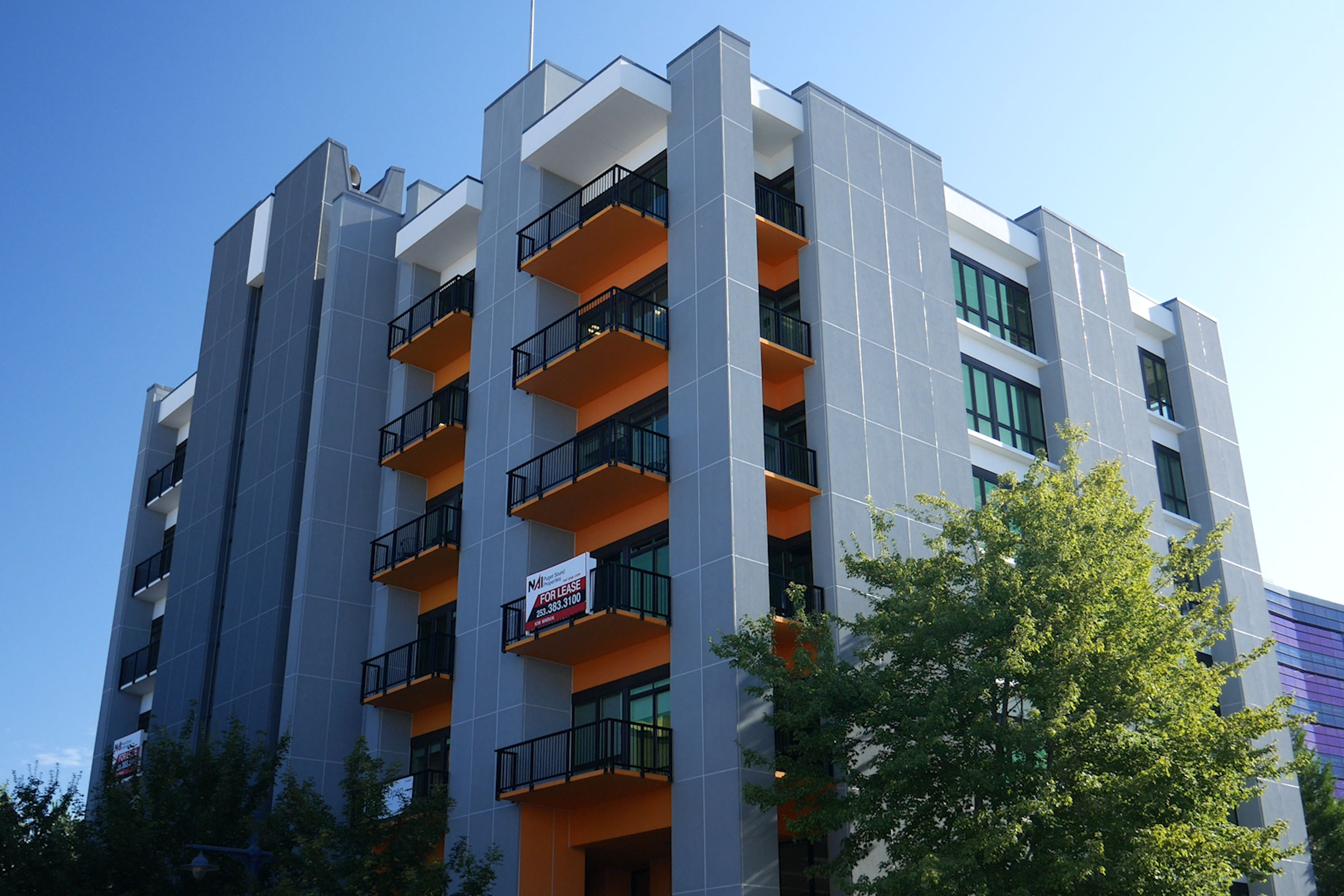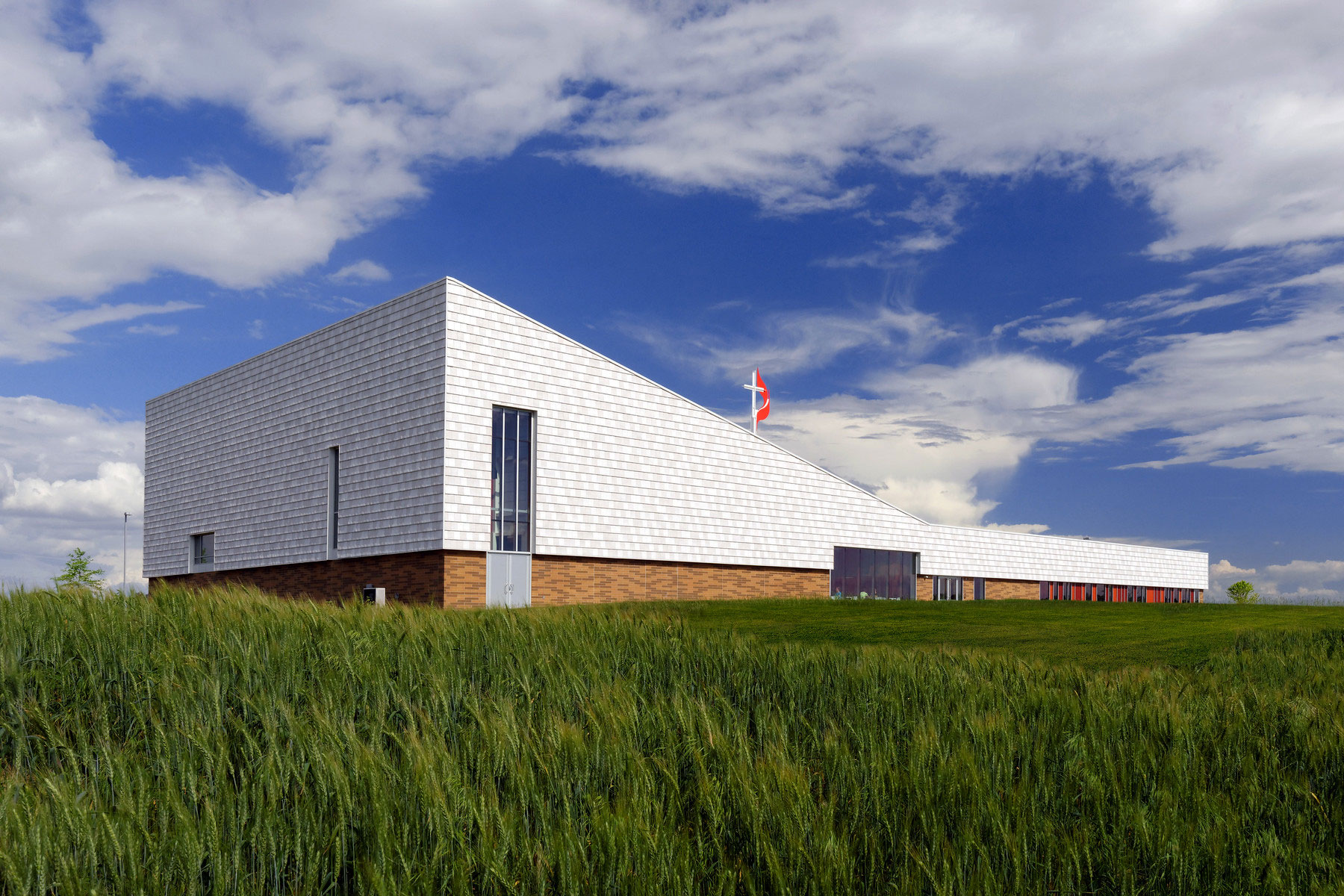Story at a glance:
- Brownfields are properties that have hazardous substances, making redevelopment more difficult.
- Srategies like soil removal, capping, groundwater treatment, bioremediation, and more can help brownfields.
- Springdale Green, the Stratford, Austin Public Library, and DADA Distrikt are just a few examples of successful brownfield redevelopment projects.
Brownfields present a real and potentially devastating threat to the health of surrounding environments and communities—and current estimates suggest that there are over 450,000 brownfields in the US alone.
It may be expensive and time-consuming, but it is possible to remediate brownfields and safely build new development projects on newly decontaminated sites.
This article aims to provide an introductory overview to brownfields and their redevelopment by identifying the benefits and challenges of cleaning up polluted sites, exploring the common methodologies involved in remediating contaminated soil and groundwater, and taking a look at a few successful redevelopment projects built atop former brownfields.
What is a Brownfield?
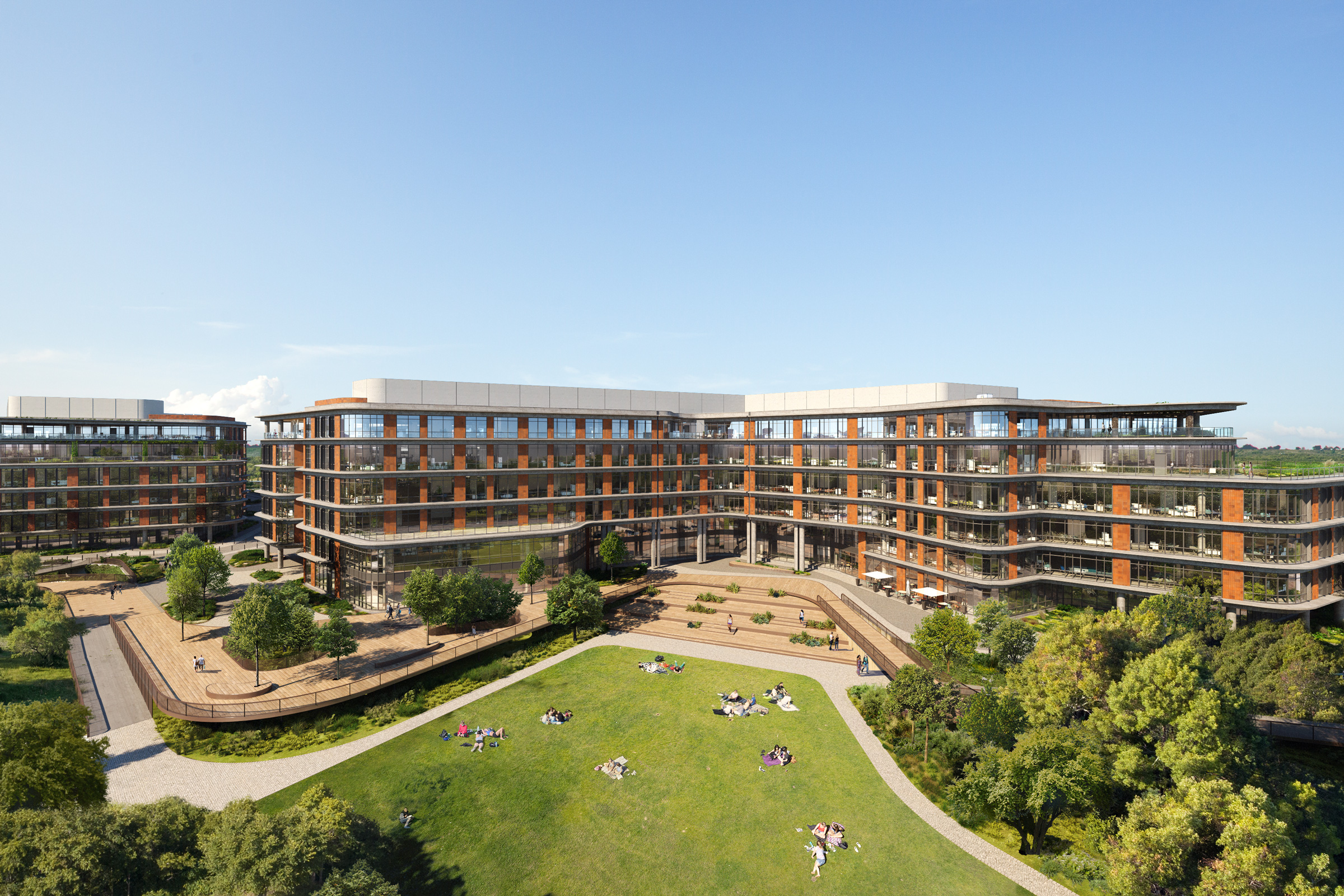
In a restored preserve, this project will transform a former brownfield into a verdant oasis, returning 30 acres of green space to the community. Rendering courtesy of Gensler and dwg
The EPA defines a brownfield as “a property where expansion, redevelopment, or reuse may be complicated by the presence or potential presence of a hazardous substance, pollutant or contaminant.”
Brownfields are typically a byproduct of commercial or industrial operations and encompass everything from former service stations and warehouses to factories and landfills.
Contrary to popular belief, a site does not need to be heavily polluted to be considered a brownfield, although some level of environmental contamination—or at the very least, a reasonable suspicion of contamination—is required. Brownfields in which pollutants are truly present are the most dangerous, posing a threat to both ecosystem and human health that, in extreme cases, can increase the risk of reproductive issues, respiratory diseases, and certain cancers in surrounding communities.
In addition to health risks, the presence of brownfields is known to have negative social impacts on nearby communities, including decreased access to healthy foods, higher rates of substance abuse, increased crime rates, and declining mental health stemming from a lack of recreational and green spaces.
Benefits of Redeveloping Brownfields
While the removal of pollutants is the most obvious benefit of brownfield redevelopment, there are other advantages as well.
Removal of Environmental Hazards
Predictably, the biggest benefit of redeveloping brownfield sites is the positive impact doing so has on the surrounding environment. Brownfields introduce pollutants into the soil, water, and air—pollutants that, over time, can cause a loss of biodiversity and endanger both human and environmental health.
Remediating contaminated brownfields removes these hazards, restoring ecosystem health and eliminating threats to human health and well-being.
Reduced Urban Sprawl
Similar to the adaptive reuse of buildings, redeveloping an existing site instead of clearing new land for development benefits the environment by preserving existing green spaces and limiting urban sprawl. This in turn helps reduce deforestation and habitat loss, improves water and air quality, and decreases the risk of urban flooding.
Revitalization of Underperforming Spaces
Because they are often the byproducts of abandoned or bankrupt industrial sites, brownfields are typically found in economically distressed and historically underserved communities. The redevelopment of these sites represents an opportunity for economic stimulation and the revitalization of underperforming spaces by introducing new businesses, creating jobs, and increasing tax revenue.
Skidmore, Owings & Merrill’s ongoing Lincoln Yards mixed-use brownfield redevelopment project, for example, is anticipated to have a huge impact on Chicago’s economy by creating 23,000 onsite jobs and generating $38.4 million annually in net new revenue for the city.
Challenges of Redeveloping Brownfields
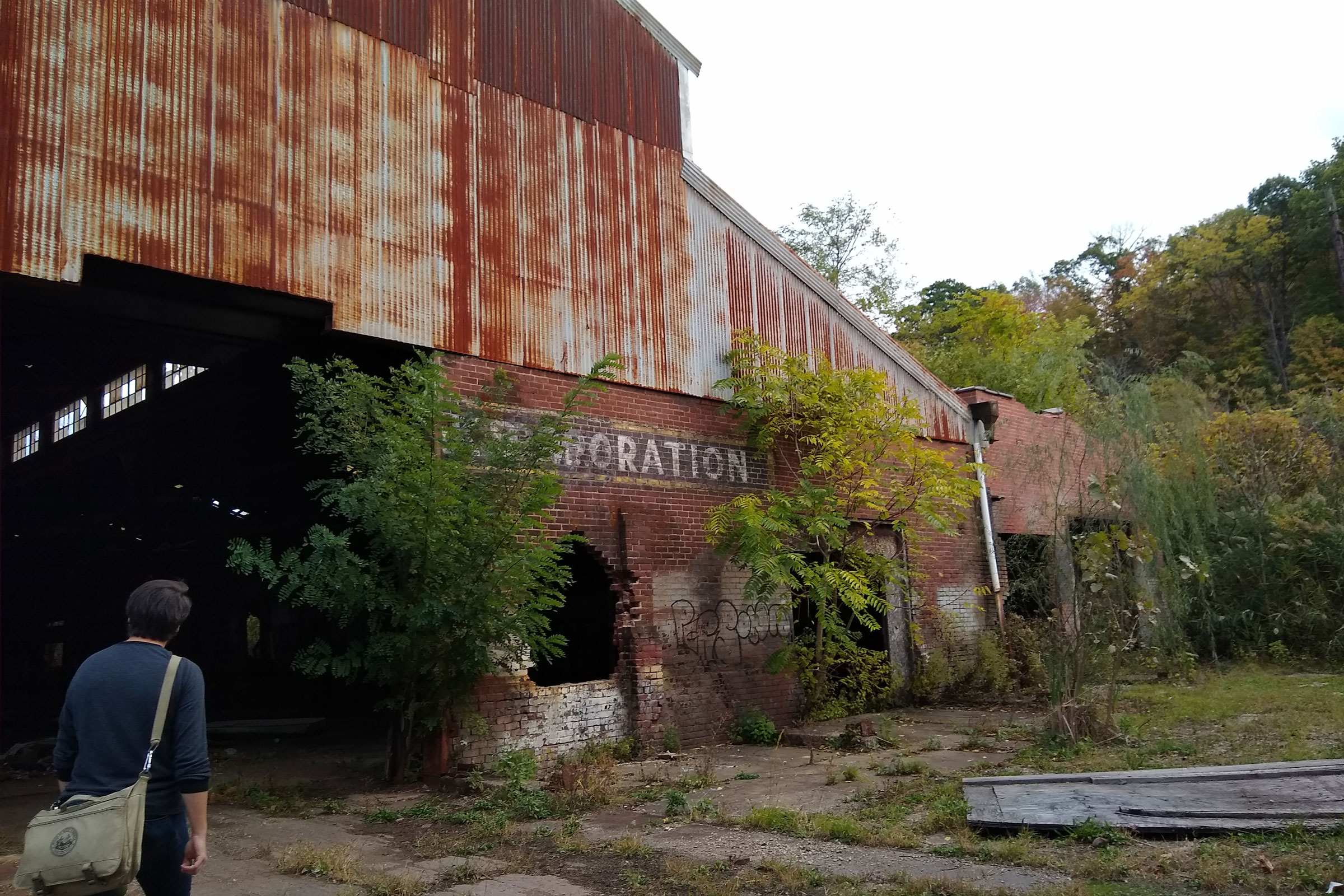
Redeveloping brownfields is an expensive and time-consuming process that often comes with a host of risks. Photo by Nick Guertin
There are, however, a number of challenges that often deter developers from redeveloping brownfield sites, including:
Time-Consuming
Because they must be remediated before construction can begin, brownfield redevelopment projects are much more time-consuming than conventional development projects built atop non-contaminated sites. Depending on the level of contamination, cleanup alone can take anywhere from a few months to several years or even decades—and that’s to say nothing of the monitoring that must be conducted after cleanup has finished.
Hidden Risks
Brownfield redevelopment projects are very rarely straightforward, with many of them presenting hidden risks only discovered during the remediation process. These risks can result in delays and increased project costs that might threaten or otherwise jeopardize the long-term success of the project itself, leading to a failed redevelopment.
High Project Costs
While it’s true that brownfield properties are often cheaper to purchase than greenfield sites, the total project costs are typically higher because of the cleanup that is required to make them safe for future occupants and/or visitors. Of course, the entity or entities that caused the pollution are supposed to pay for cleanup, but that isn’t always possible if the polluter has abandoned the property, gone out of business, or if they simply can’t afford to fund cleanup efforts—and in some cases, it may not even be possible to identify the source of the site’s contamination.
Fortunately there are many programs, nonprofit organizations, and even government initiatives that can help fund brownfield redevelopment projects and alleviate the costs involved. The largest of these is the federally-administered Comprehensive Environmental Response, Compensation, and Liability Act (CERCLA), more commonly referred to as Superfund. CERCLA forces responsible parties to clean up contaminated brownfield sites or reimburse the government for EPA-led cleanups. If no responsible party is identified, Superfund provides the EPA with the necessary funds to perform the clean up.
The Process for Brownfield Redevelopment
Realistically speaking, there is no one-size-fits-all approach to redeveloping brownfield sites, as no brownfield is the exact same as another and will thus require a custom cleanup strategy tailored to its site-specific conditions. There are, however, a few basic steps that form the foundation of any brownfield redevelopment project:
1. Research

Redeveloping a brownfield starts with researching the site’s history, a task that requires a Phase I environmental site assessment be conducted to identify any Recognized Environmental Conditions. Photo by Qualibau
Before a brownfield can be remediated, research must be conducted on the site’s history to identify any Recognized Environmental Conditions, or what ASTM E1527-13 defines as “the presence or likely presence of any hazardous substances or petroleum products in, on, or at a property.”
Most developers hire an environmental consulting firm or a licensed environmental professional to conduct a Phase I environmental site assessment (ESA) to gather this information, which typically costs anywhere from $1,400 to more than $4,600.
In the event that the ESA identifies potential contamination, it’s time to move on to the second step: assessing the degree of contamination.
2. Assess
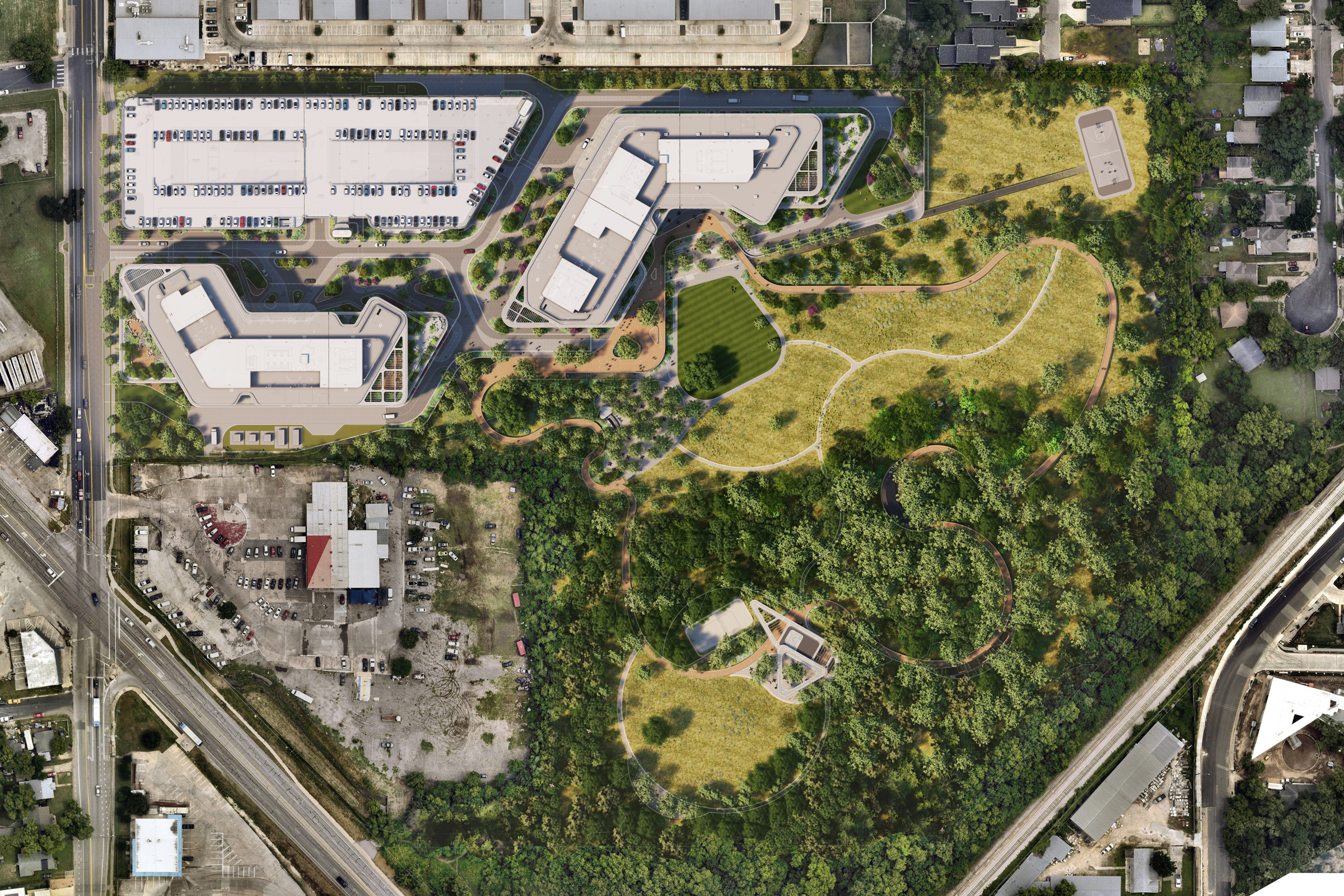
If potential contamination is identified in the Phase I ESA, a Phase II ESA will need to be conducted to assess the type and degree of contamination present. Rendering courtesy of Gensler and dwg
Developers that choose to move forward with confirmed contaminated sites will then need to hire a consulting team of geologists and engineers to conduct a Phase II ESA to assess the type/level of contamination and the hazards those pollutants present. In accordance with parameters set by ASTM E1903-11, soil, air, groundwater, and material tests are taken during a Phase II ESA. Samples are collected and analyzed to identify risks, hazards, and toxicity levels, which in turn inform future project costs as well as any economic and/or legal risks.
In addition to being more thorough than Phase I ESAs, Phase II ESAs are also much more expensive—depending on certain factors and the amount of tests taken, developers can expect to spend anywhere from $25,000 to $100,000 on a Phase II ESA.
3. Plan
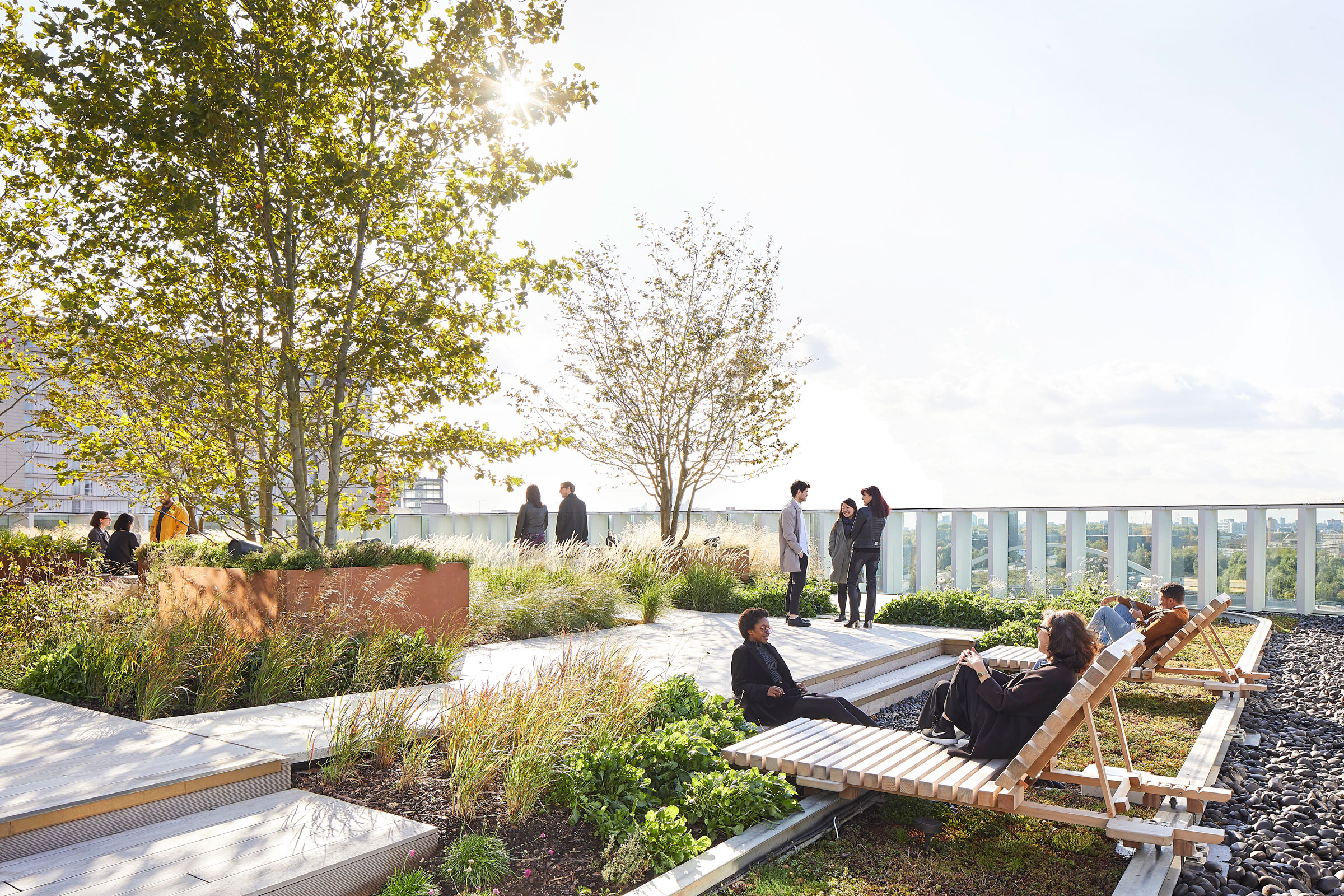
After a Phase II ESA has been conducted and samples taken, reuse, cleanup, and funding plans for the brownfield need to be developed. Photo by Hufton + Crow Photography
Once the scope of contamination is known, detailed reuse, cleanup, and funding plans may be developed. Site reuse planning is a crucial part of the redevelopment process and is heavily influenced by local economic, social, infrastructural, and environmental conditions.
The type of proposed development will also influence the cleanup plan, as different project categories have stricter standards when it comes to acceptable contaminant levels. Residential developments, for example, typically require the highest degree of contaminant removal, whereas an industrial project may not require as intensive decontamination.
After cleanup and reuse plans have been drawn up, a funding plan must be created and a funder identified. Funding can come from four possible sources: the polluter, the purchaser, a nonprofit, or the government. Developers are encouraged to check if their brownfield redevelopment project is eligible for the EPA Brownfields Assessment or Multipurpose Grant.
4. Clean or Contain
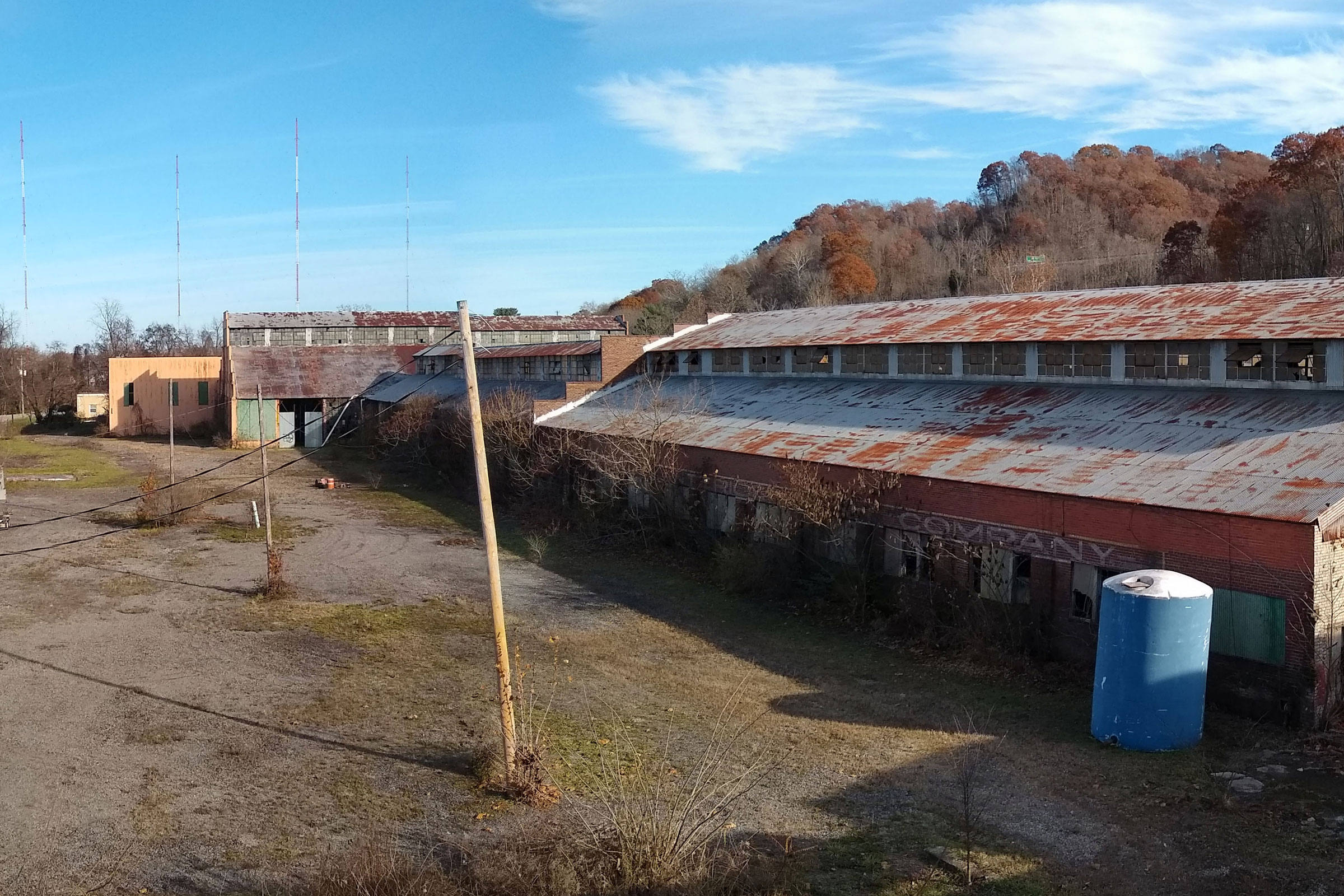
Cleaning or containing contaminants is typically the most expensive, time-consuming, and labor-intensive portion of any brownfield redevelopment project. Photo by Nick Guertin
Cleaning and/or containing existing pollutants represents the most time-consuming and laborious portion of the brownfield redevelopment process. Cleanup efforts vary depending on the type and degree of contamination. We’ve outlined some of the most common below:
Soil, Tank & Waste Removal
Contaminated soil typically represents the bulk of a brownfield cleanup and soil testing is an integral part of the Phase II ESA. In the event that soil tests indicate unsafe levels of pollutants, a common method for dealing with the contaminated soil is to simply excavate and remove it from the property altogether, at which point it may be disposed of in a landfill or treated offsite. Clean soil or some other material can then be brought in to fill the excavated area.
If soil is contaminated with gasoline or some other fuel stored onsite, the underground tanks and any accompanying piping will need to be dug up and removed as well. Soil located below these tanks should also be tested for contamination and excavated if necessary.
Should any existing hazardous waste (e.g. asbestos, pesticides, automotive wastes, et cetera) be stored or otherwise contained on site, it must also be properly disposed of for redevelopment to proceed.
Capping
If for some reason contaminated soil cannot be removed from the property, it may instead be capped. Capping refers to the practice of placing a cover over polluted soil as a means of isolating it and preventing humans, animals, or water from coming into contact with it.
There are four basic layers involved in the capping of contaminated soil:
- Clay. Adding a layer of compacted clay on top of the contaminated soil helps to prevent water from draining into it and polluting groundwater.
- Geomembrane. A strong layer of plastic-like material that is laid on top of the clay to further prevent water from draining down into the soil and gasses from escaping upwards.
- Drainage. Typically consists of sand or gravel and may also contain rows of slotted pipes to help collect and drain rainwater away from the contaminated soil.
- Vegetative. A final layer of topsoil planted with grasses or other vegetation; designed to prevent erosion and improve the site’s appearance.
All four layers may not be necessary depending on the severity of contamination—and depending on the site’s intended use, a vegetative layer may be foregone in favor of asphalt or concrete. Regular inspections are required to ensure that the cap remains undamaged and groundwater monitoring wells should be drilled around the polluted soil. Routine testing of these wells helps detect the presence of any leaks that may occur.
Soil & Groundwater Treatment/Containment
If soil and groundwater has been contaminated by brownfield pollutants like fuel oil or industrial solvents, it will need to be treated before redevelopment begins. For groundwater, this is commonly achieved via the pump and treat process, in which the contaminated groundwater is pumped and conveyed to an above-ground treatment system that then removes the pollutants. The pumping action serves to draw polluted water to the extraction wells, which in turn prevents contaminant plumes from spreading.
It is also possible to treat soil and groundwater in situ without having to excavate or extract it from the aquifer. This can be accomplished using a variety of methods:
- Chemical oxidation. Refers to the injection of oxidants (e.g. permanganate, hydrogen peroxide, persulfate, et cetera) into underground wells where they are then allowed to disperse into the soil and groundwater; when certain contaminants come into contact with oxidants, they begin to break down into less harmful compounds.
- Chemical reduction. Describes the process of using chemical reducing agents (e.g. zero valent metals like pure iron, sodium dithionite, and polysulfides) to change contaminants (typically chromium and the industrial solvent trichloroethylene) into other, less dangerous forms; reducing agents are mixed with water and injected directly into wells, where they are allowed to dissipate into the soil and groundwater.
- Permeable reactive barriers. A permeable reactive barrier (PRB) is a type of underground wall that treats contaminated groundwater as it flows through it using reactive materials (e.g. limestone, carbon, iron, et cetera); the type of reactive material used for the PRB depends on the types of contaminants present in the groundwater and will cause pollutants to either stick, precipitate, react, or biodegrade.
In cases where contaminated groundwater plumes cannot be properly treated, they may need to instead be contained to prevent them from migrating and contaminating other aquifers, wells, or nearby wetlands. Groundwater containment is achieved by way of vertical engineered barriers, or impermeable subsurface walls built to control the flow of groundwater.
Bioremediation & Phytoremediation
In lieu of injecting chemicals into the soil to break down contaminants, two natural methods can be used instead: bioremediation and phytoremediation.
- Bioremediation. Refers to the practice of using microbes (i.e. bacteria) to break down certain contaminants—like solvents, pesticides, and petroleum products—in soil and groundwater; amendments like vegetable oil, molasses, and oxygen are typically added to improve the conditions for microbe growth and proliferation.
- Phytoremediation. The natural process by which root systems release substances that help plants neutralize, stabilize, or increase microbial degradation of pollutants in close proximity to their root system; certain plants can also draw contaminants in through their roots, reducing the amount of pollutants in the soil or water.
Keep in mind, however, that natural cleanup methods like bioremediation and phytoremediation often take several years to adequately remove contaminants if they are present in high concentrations or trapped in harder to reach spaces, increasing the overall time frame for redevelopment.
Air Sparging & Soil Vapor Extraction

GCP’s PREPRUFE Plus can help prevent VOCs and other gaseous contaminants from entering structures. Photo courtesy of GCP
Brownfield contaminants can also manifest in gaseous form, a phenomenon that happens when chemicals evaporate. Two methods—soil vapor extraction (SVE) and air sparging—are used in conjunction with one another to remove these gasses from contaminated soil and groundwater.
- SVE. Necessitates the drilling of wells into contaminated soil located above the water table and the use of aboveground blowers or pumps to create a vacuum that pulls contaminated vapors through the soil and out of the wells.
- Air sparging. A process in which injection holes are drilled into groundwater-soaker soil below the water table and compressed air is pumped into the resulting wells; as air bubbles through the groundwater, contaminant vapors are carried upwards into the soil above the water table, where it is then pulled out using SVE technology.
The extracted air and contaminant vapors are then piped to an air-water separator to remove unwanted moisture. Next, the vapors are separated from the air by pumping them through containers of activated carbon—the vapors stick to the carbon while the air passes through and is vented into the atmosphere.
Air sparging and SVE work best in the removal of chemicals like volatile organic compounds (VOCs) that evaporate easily. Cleaning a brownfield using these two methods typically takes several years, though they are not as disruptive as other cleanup strategies that operate at a faster rate.
If remediation efforts do not include air sparging, SVE, or other strategies for removing gaseous contaminants, the use of pre-applied membranes underneath building foundations can help prevent VOCs from seeping into the structure and degrading air quality.
Not all pre-applied membranes are created equally, however. “Most pre-applied membranes do not offer both protection against water and harmful gasses. Some waterproofing membranes will break down over time when exposed to certain contaminants,” Iltaz Alam, a product manager at GCP, previously wrote for gb&dPRO. “Others may not have the tight, integral bond to keep vapors out.”
GCP Applied Technologies—owned by Saint-Gobain—is a leading global provider of high-performance specialty construction chemicals and building materials that offers a variety of pre-applied membrane solutions, including PREPRUFE Plus. “The PREPRUFE Plus waterproofing membrane from GCP has proven protection from both water as well as ground contaminants and various gasses—including methane,” writes Alam.
5. Monitor
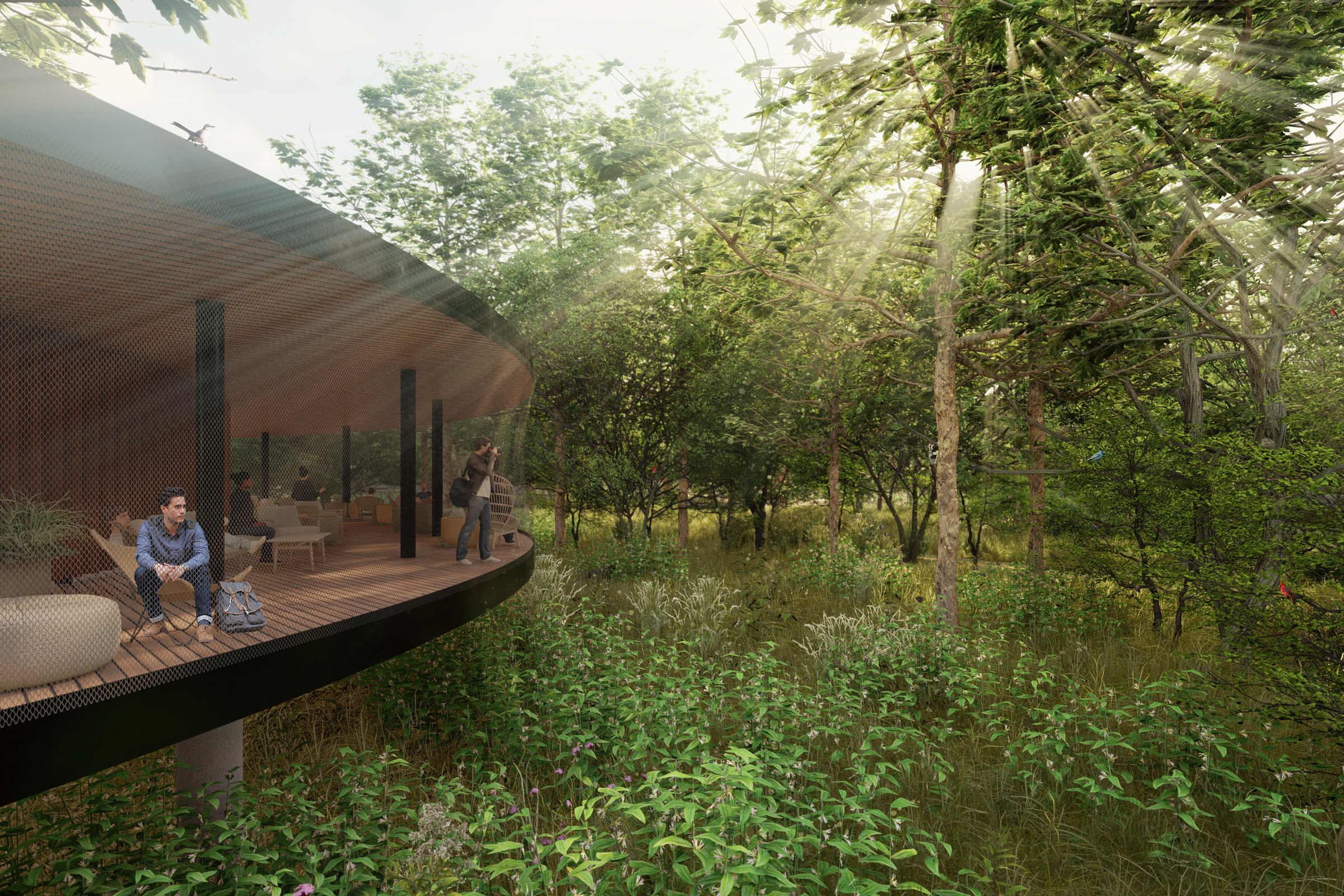
Monitoring is the last stage of any brownfield redevelopment project and may take anywhere from a few months to a few years. Rendering courtesy of Gensler and dwg
Once the brownfield has been cleaned of pollutants and the state or appropriate governing body has signed off on the cleanup, the site must be monitored—sometimes for years—to ensure that contaminant levels do not begin to increase and/or containment areas remain secure and leak-free.
Generally speaking, monitoring is officially considered complete once the site receives a “No Further Action Required” letter from the government agency overseeing the project. This document signifies that regulators are satisfied with the efforts to clean or contain existing contaminants and believe any environmental hazards are sufficiently eliminated or neutralized.
7 Examples of Brownfield Redevelopment Projects
Now that we’ve a better understanding of what brownfield sites are and how they may be revitalized, let’s take a look at a few successful brownfield redevelopment projects from around the world.
1. Austin Central Library, Austin
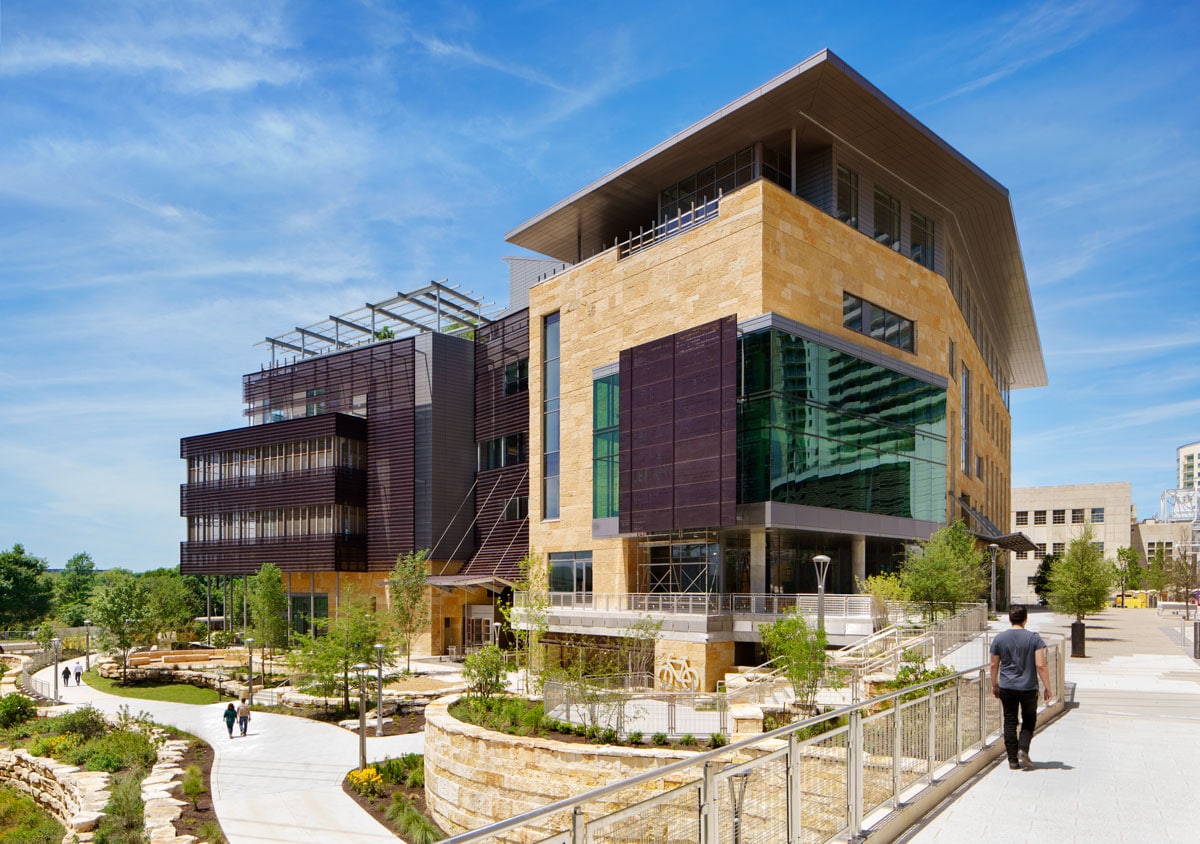
The Austin Central Library. Photo courtesy of Lake|Flato
Designed by Lake|Flato in collaboration with the Shepley Bulfinch architecture firm, the Austin Central Library paved the way for a once uninhabitable landscape to become a bustling neighborhood with a thriving, diverse community.
Built atop a former brownfield site that once belonged to the now-decommissioned Seaholm Power Plant, the LEED Platinum-certified Austin Central Library encompasses 198,000 square feet and services an estimated 4,500-plus people each day. The library includes collaborative learning spaces, community rooms, a bookstore, coffee shop, as well as a demonstration kitchen and is lit almost entirely by natural daylight.
Today the Austin Central Library is affectionately referred to as “Austin’s living room,” a title both the library and Lake|Flato actively embrace. “Libraries are where we exchange information and build community, and they are integral places for learning and sharing,” David Lake, principal in charge of Lake|Flato, previously told gb&d. “It has been a joy for both firms to design a place that builds upon the local character of Austin and aspires to be a very resource-efficient, welcoming city living room.”
Since the library’s completion in 2017 bike trails and pedestrian walkways have been added to the surrounding area and the site as a whole has become Austin’s first EcoDistrict, pioneering a range of environmentally sustainable, restorative, and people-centric practices.
2. The Stratford, London

SOM set out to design The Stratford—a sustainable 42-story residential and hotel high-rise in East London. Photo by Hufton + Crow Photography
Designed by SOM, the Stratford in London showcases how effective high-density high-rises can be at promoting sustainability, reclaiming contaminated sites, and reducing urban sprawl.
“The densification of cities is critically important if we are going to fit more humans onto this planet, so there is of course the many benefits of it being a high-density residential building on a compact site,” Mina Hasman, associate director and sustainability lead at SOM, told gb&d in a previous interview. “And the land itself was a brownfield site, so we took advantage of being able to rectify the negative impacts this contaminated, empty site was having on the community.”
Oriented so as to make the most out of natural wind currents, The Stratford is able to passively cool and cross-ventilate itself, reducing energy usage and the building’s operating costs. A corrugated curtain wall and high-performance façade help maximize the admittance of natural light while minimizing the amount of solar heat gain. When necessary, the building uses a district-wide water-based heating and cooling system—which is more sustainable and efficient than conventional HVAC systems—to regulate interior temperatures.
Of the building’s notable features, however, none are more impressive than the three sky gardens. Seeded with native plant species, the sky gardens provide habitats for crucial pollinators and migratory birds, while also serving to improve psychological health and promote interactions between occupants.
3. Hazelwood Green & Mill 19, Pittsburgh
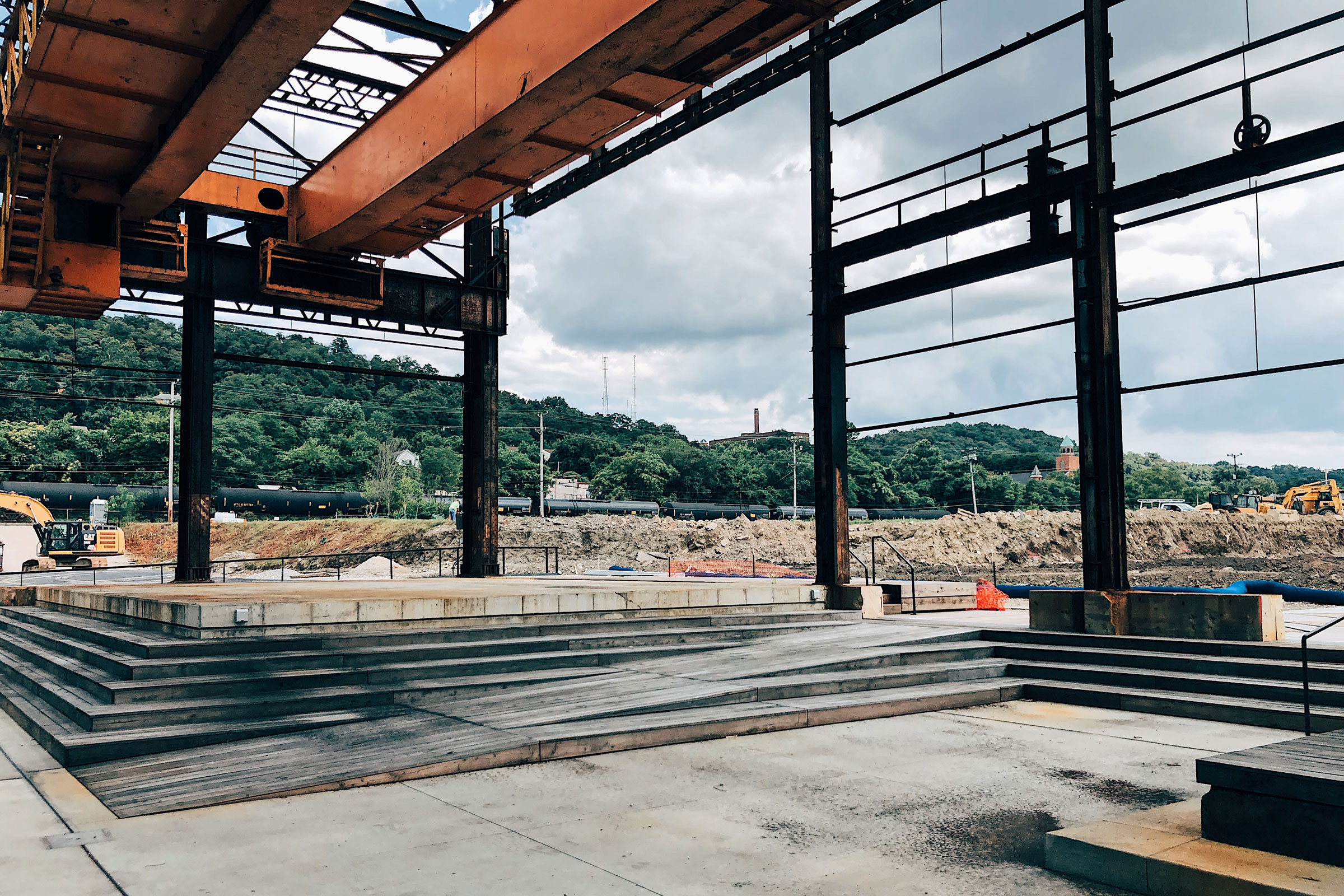
In Pittsburgh, the three rolling steel mills were preserved to make up what is now known as Mill 19. Photo courtesy of Ten X Ten
Resting atop redeveloped brownfields that once housed mills, factories, and plants belonging to the Jones & Laughlin Steel Company, the Hazelwood Green mixed-use development honors Pittsburgh’s industrial history while embracing modern notions of sustainability.
Owned and operated by a partnership of several prominent Pittsburgh foundations, with remediation work and specific projects owned by the Regional Industrial Development Corporation, Hazelwood Green encompasses 178 acres of commercial buildings, public spaces, walking trails, and riverfront access.
Most of the original buildings built on the site were torn down, but the three former rolling steel mills were adapted and repurposed to form Mill 19, a series of buildings-within-buildings now dedicated to advanced manufacturing research. MSR, a Minneapolis-based firm, led Mill 19’s redesign and focused heavily on the integration of clean, renewable energy into the buildings’ designs. A photovoltaic array of nearly 5,000 silicon panels adorns the roof and holds the title as the largest solar installation in Pittsburgh’s history, putting the project well on its way to achieving net zero energy usage.
All of the site’s landscape design, on the other hand, was headed by TEN x TEN and D.I.R.T Studio. Native grasses and other plant species were prioritized wherever possible and an extensive stormwater management system—consisting of a rooftop collection system and stormwater filtration garden—was installed along the mill’s western facade. Reclaimed materials from the site were also repurposed as outdoor furniture.
“To have a site like this with such an incredible economic and social history of what Pittsburgh is, to come across it after it was vacant for so long, it was a dream for a landscape architect to work on a project like this, at this scale,” Maura Rockcastle, principal of TEN x TEN, previously told gb&d.
4. Black Diamond, Huntington, WV
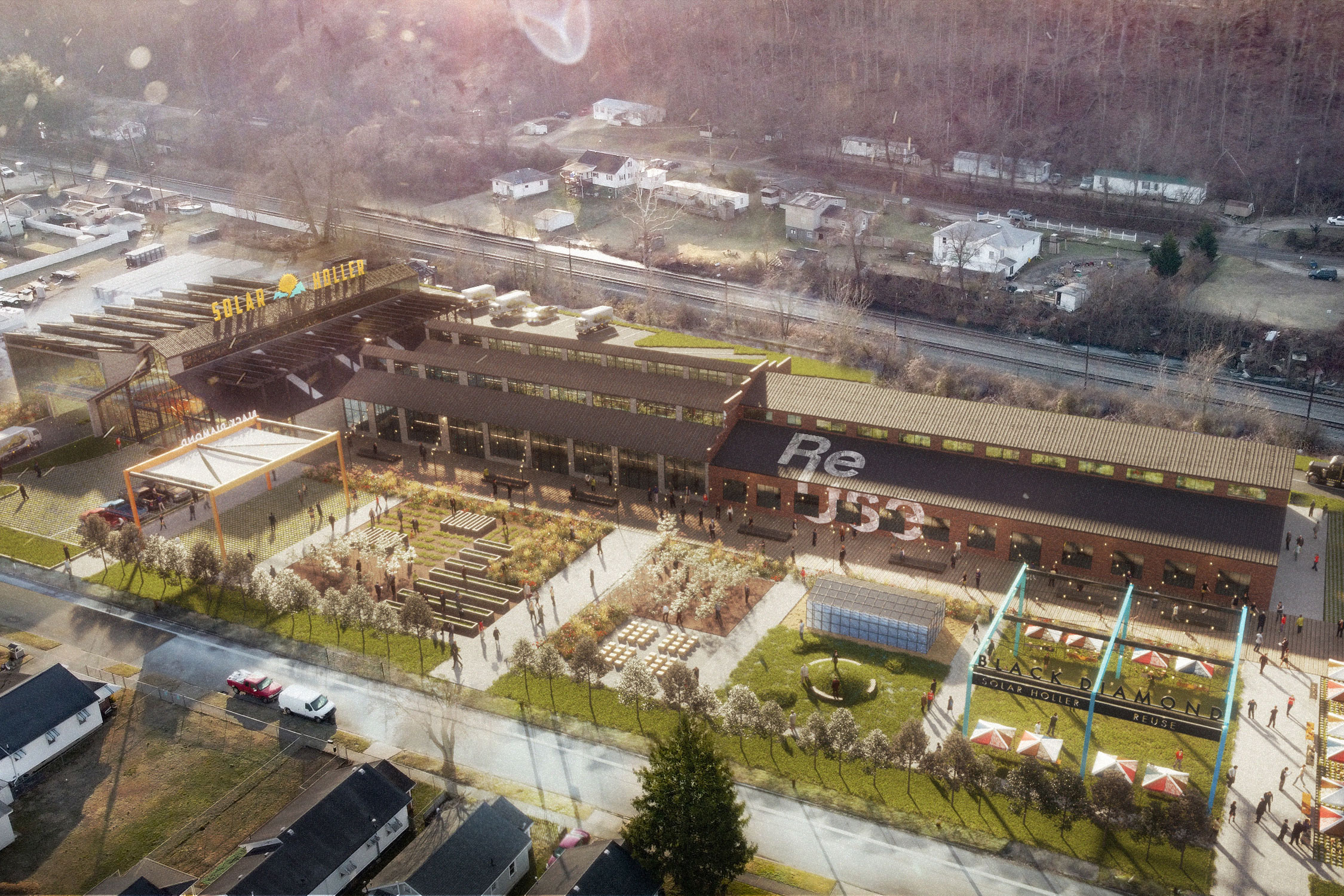
WXY and Edward Tucker Architects are designing a major adaptive reuse project along with SB Friedman for the community-based group Coalfield Development. Rendering courtesy of WXY architecture + urban design
In 2021 WXY architects + urban design and Edward Tucker Architects were commissioned by Coalfield Development to develop an adaptive reuse plan for a former World War I glider factory in Huntington, West Virginia as part of the region’s efforts to bolster the economy through revitalization of existing brownfield sites and abandoned coal fields. WXY’s proposed strategy will allow the repurposed building—referred to as Black Diamond—to serve two tenants: Solar Holler, a full-service solar panel developer and installer, and ReUse Corridor, a consortium of local collectors, up-cyclers, and material generators.
Constructed primarily from brick and steel, the existing buildings were chosen for their high ceilings and open floor plans, of which can readily accommodate the in-and-out movement of shipment vehicles and blur the line between interior and exterior spaces. Repurposing the existing factory also allows the design team to reuse certain parts of the site in innovative ways.
“We’re able to play with some pieces of gantry cranes and older industrial architecture to make something,” David Vega-Barachowitz, an associate principal at WXY architecture + urban design, told gb&d in a previous interview. “It’s an important message not only for the reuse program that’s on site but also in reflecting back on this economic engine and community center they’re trying to create in this area.” Black Diamond is slated to open in 2026.
5. Springdale Green, Austin
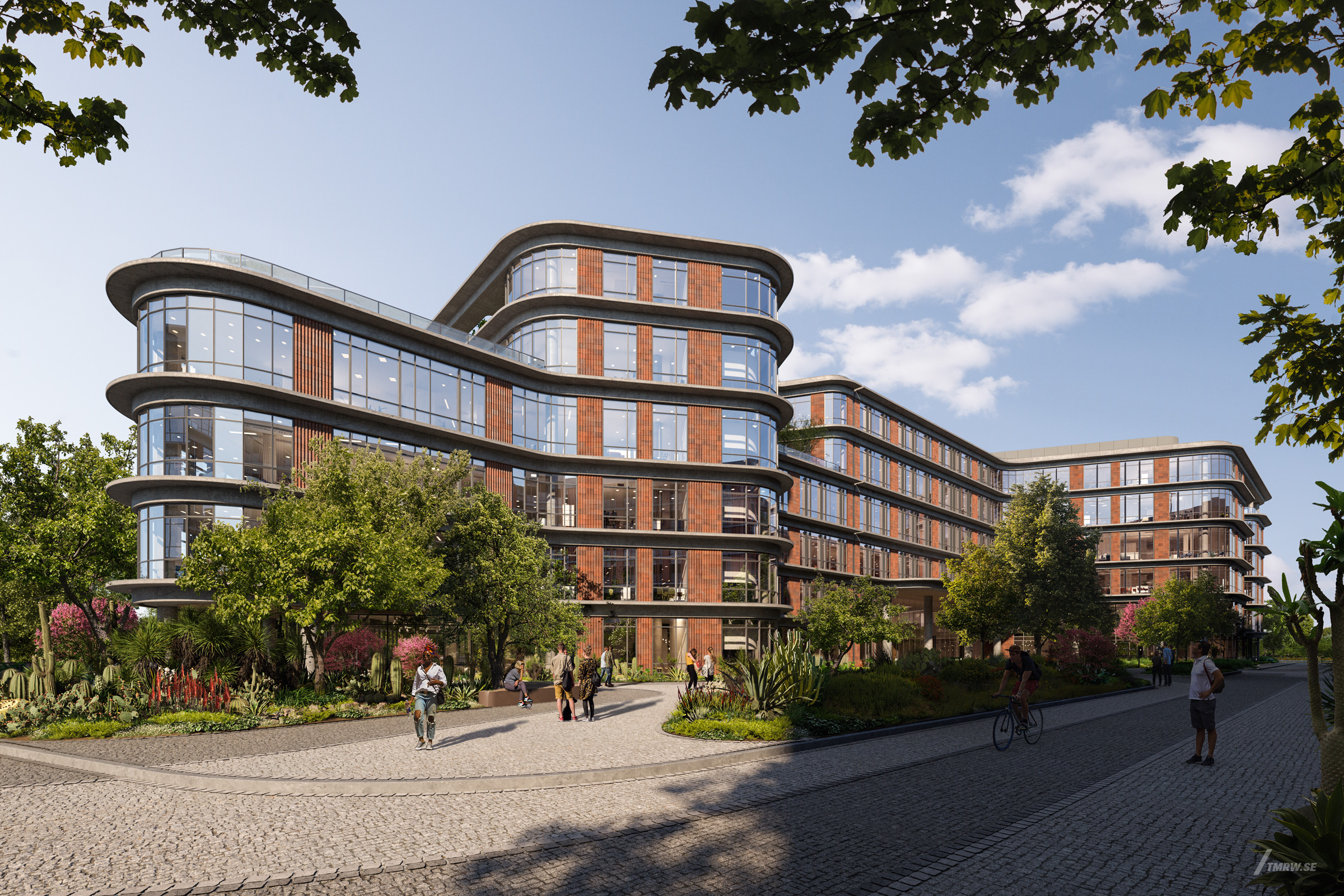
The Springdale Green campus features two six-story office buildings that include extensive outdoor amenities and state-of-the-art infrastructure, with a focus on promoting sustainability and wellness. Rendering courtesy of Gensler and dwg
Completed in early 2024 and designed by Gensler in collaboration with dwg, the Springdale Green office campus resides on a rehabilitated brownfield—originally a petrochemical tank farm—and encompasses 873,400 square feet of commercial office space across two six-story buildings that include extensive outdoor amenities.
And while the design team would have been well within their rights to redevelop a larger portion of the 30 acre brownfield as built structures, they chose instead to dedicate over 20 acres to the preservation and restoration of native woodlands, meadows, and even an urban creek tributary. The restoration plan also included the extensive removal of invasive species that had been previously introduced to the site. An elevated boardwalk winds its way through the campus and allows visitors to experience each of the site’s eco-zones.
“Springdale Green represents a paradigm shift—healing and restoring a neglected site into a native ecological landscape that is innovative and natural,” Daniel Woodroffe, president and founder of dwg, said in a press release. “All of these efforts create a highly performative and functional environment that achieves the highest standards of sustainable design.”
6. DADA Distrikt, Brno, Czech Republic
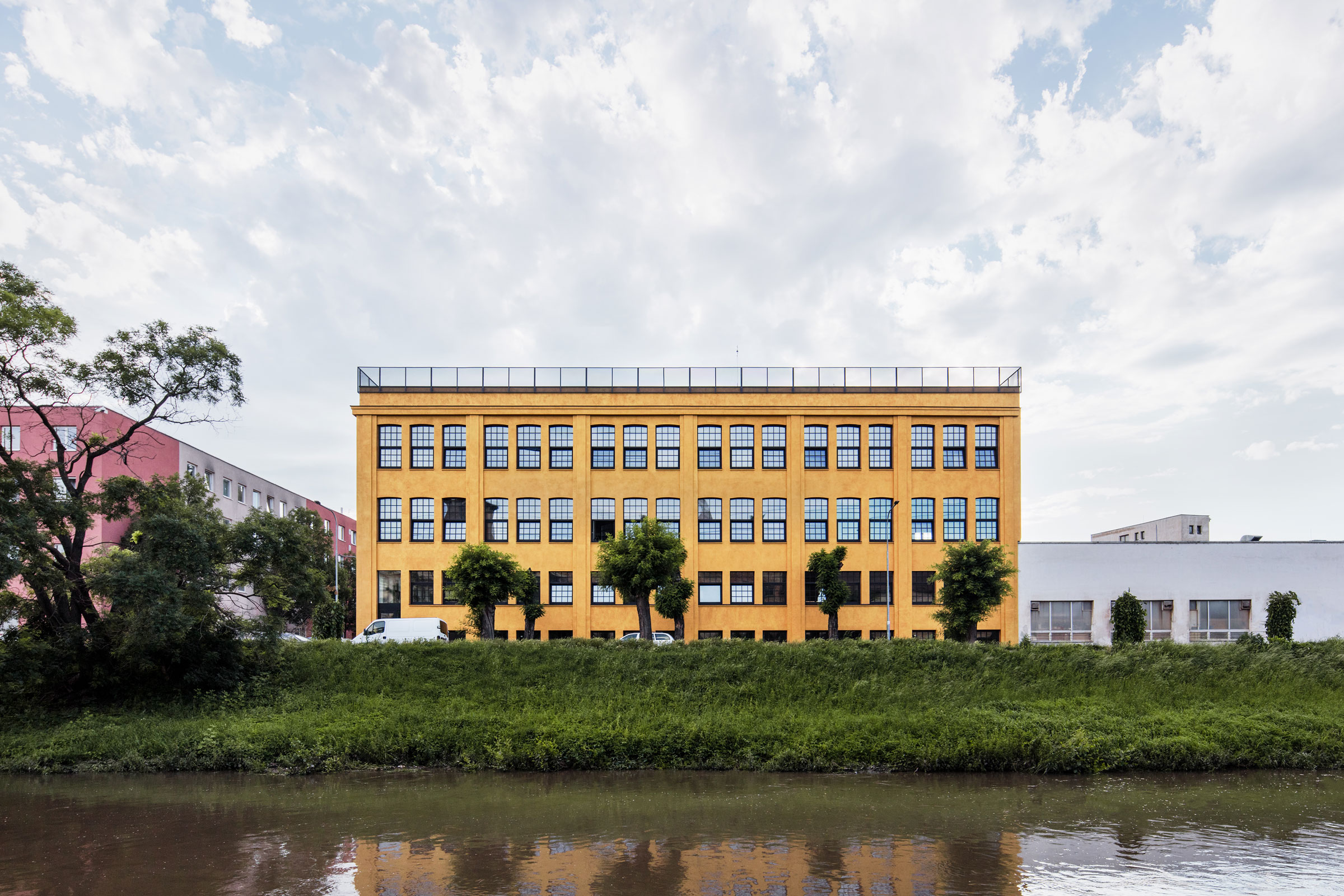
DADA Distrikt, designed by KOGAA Architects, rests on the site of a former brownfield. Photo by Kubicek Studio
Surrounded by the brownfields of an industrial area in the Brno region of the Czech Republic, a former storage facility was adapted into the DADA Distrikt, an affordable housing project that stands out with its gold finish and rooftop garden.
The architecture firm KOGAA built the four-story affordable housing unit with the goal of emphasizing the already-existing industrial character of the space. To both aesthetically and sustainably advance the industrial building, the firm created a rooftop garden.
“In response to the issue with floods in the country and the building’s sensible closeness to the riverside, we designed a green roof as a tool for water management,” Alexandra Georgescu, cofounder of KOGAA, previously told gb&d. “The roof becomes a filter for the rainwater, slowing down the flow and therefore making the building a responsible player at the urban level of the area. A greywater system is also used for the building’s washrooms and irrigation.
7. Dalston Works, London

Built on a former brownfield, Dalston Works is one of the tallest mass timber buildings in the world. Photo by Daniel Shearing
Designed by Waugh Thistleton Architects, the 10-story, 121-unit Dalston Works residential building is an excellent example of how the redevelopment of neglected brownfields can help provide urban centers with much-needed high quality, high-density housing.
In addition to remediating the once-contaminated site, the Dalston Works project practices sustainability in its liberal use of cross-laminated timber (CLT), a highly-durable engineered wood product that is lighter and less carbon-intensive than concrete and steel. All of the CLT used in the project was sourced from responsibly managed forests that replant five trees for every one tree cut down.
“As a practice we look to build in a way that reduces the impact of construction on the environment,” Andrew Waugh, partner at Waugh Thistleton Architects and the lead architect on the Dalston Lane project, told gb&d in a previous article. “A building’s carbon footprint is generally measured in terms of its energy use while (occupied), but we are concerned about the footprint of the building materials themselves, which is rarely taken into account.”



